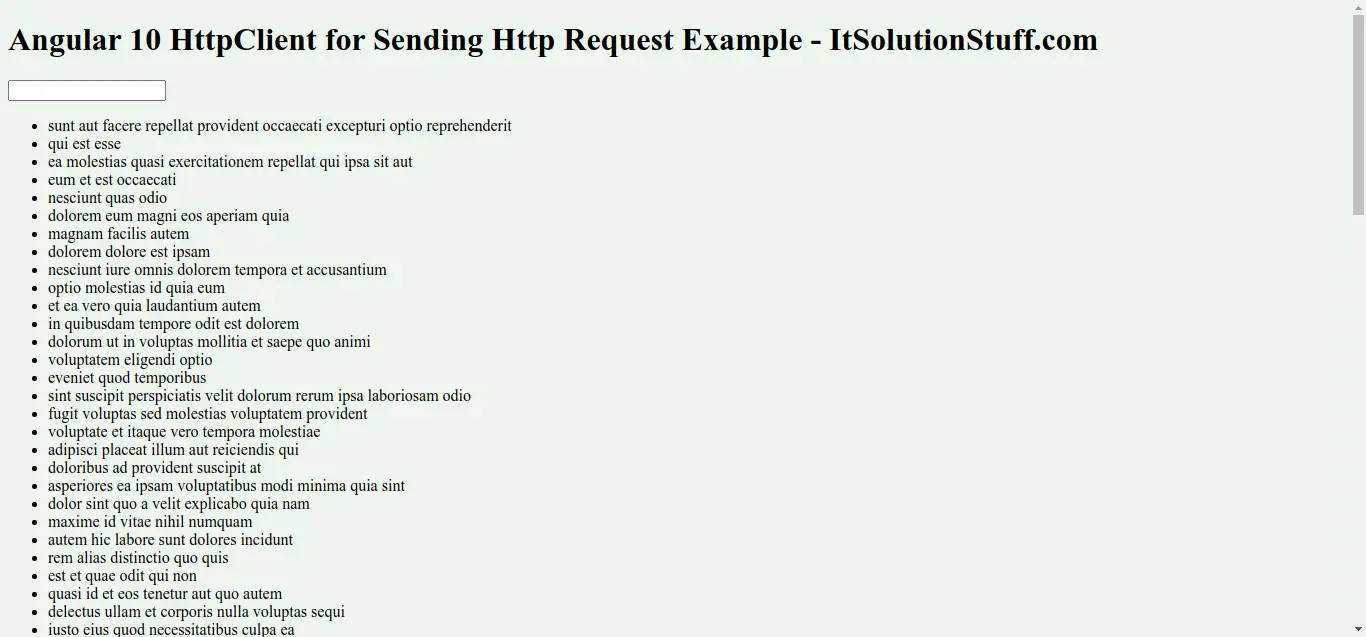Angular 10 HttpClient Service Tutorial and Example
Hi Dev,
In this tutorial, i will show you simple example of httpclient request with angular 10 app. you can easily send http request in angular 10 application. we will create httpclient service to getting data using HttpClientModule and HttpClient in angular 10.
Every App must important to sending api request to another server. we can use http client request and get data and store data information to our server. as specially when you are working with angular, vue, react application. you must have to learn how to run http client request with angular 10.
Here, i will give you very simple example to get all data using api and store data using api. we will use jsonplaceholder api for testing now. so we don't require to create new api for it.
So, let's see bellow example step by step how to create http service and how to use it.
Step 1: Create New App
You can easily create your angular app using bellow command:
ng new my-new-app
Step 2: Import HttpClientModule
In this step, we need to import HttpClientModule to app.module.ts file. so let's import it as like bellow:
src/app/app.module.ts
import { BrowserModule } from '@angular/platform-browser';
import { NgModule } from '@angular/core';
import { AppComponent } from './app.component';
import { HttpClientModule } from '@angular/common/http';
@NgModule({
declarations: [
AppComponent
],
imports: [
BrowserModule,
HttpClientModule
],
providers: [],
bootstrap: [AppComponent]
})
export class AppModule { }
Step 3: Create Service for API
Here, we need to create service for http client request. we will create service file and write client http request code. this service will use in our component file. So let's create service and put bellow code:
ng g s services/post
Now let's add code as like bellow:
src/app/services/post.service.ts
import { Injectable } from '@angular/core';
import { HttpClient } from '@angular/common/http';
@Injectable({
providedIn: 'root'
})
export class PostService {
private url = 'http://jsonplaceholder.typicode.com/posts';
constructor(private httpClient: HttpClient) { }
getPosts(){
return this.httpClient.get(this.url);
}
create(post){
return this.httpClient.post(this.url, JSON.stringify(post));
}
}
Step 4: Use Service to Component
Now we have to use this services to our app component. So let's updated code as like bellow:
src/app/app.component.ts
import { Component, OnInit } from '@angular/core';
import { PostService } from './services/post.service';
@Component({
selector: 'app-root',
templateUrl: './app.component.html',
styleUrls: ['./app.component.css']
})
export class AppComponent implements OnInit {
posts;
constructor(private service:PostService) {}
ngOnInit() {
this.service.getPosts()
.subscribe(response => {
this.posts = response;
});
}
createPost(input: HTMLInputElement){
let post = {title: input.value};
input.value = '';
this.service.create(post)
.subscribe((response: { id }) => {
post['id'] = response.id;
this.posts.splice(0,0, post);
});
}
}
Step 5: Updated View File
Now here, we will updated our html file. let's put bellow code:
src/app/app.component.html
<h1>Angular 10 HttpClient for Sending Http Request Example - ItSolutionStuff.com</h1>
<input
(keyup.enter)="createPost(title)" #title
type="text" class="form-control">
<ul class="list-group">
<li
*ngFor="let post of posts"
class="list-group-item">
{{ post.title }}
</li>
</ul>
Now we are ready to run our example, you can run by following command:
ng serve
you will see layout as bellow:

I hope it can help you...

